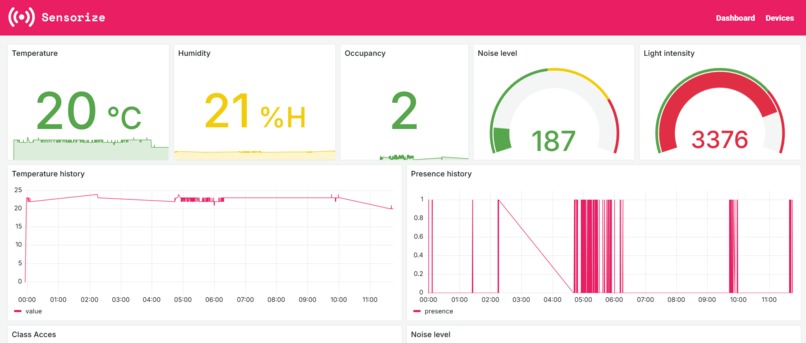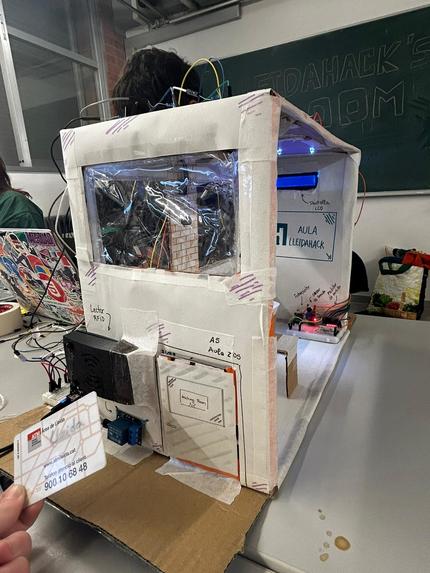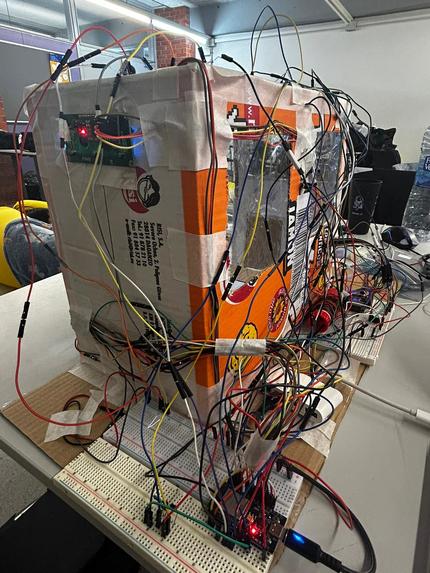During HackUPC 2024, Europe's largest student hackathon, my team and I developed "Sensorize," a project that earned us 3rd place out of over 1000 participants. This was my first hackathon experience, and it was both challenging and rewarding. We combined our skills in hardware, software, and system design to create something truly impactful.
The Challenge
The objective at HackUPC was to develop an innovative solution addressing a real-world problem. We decided to tackle an issue that directly affects universities: energy efficiency and classroom automation. Our goal was to create a comprehensive smart system that not only monitors and optimizes energy consumption in classrooms but also enhances the overall experience for both students and teachers.
What is Sensorize?
Sensorize is a fully integrated classroom automation system featuring multiple key functionalities:
-
Lighting Control:
Our system offers dual lighting control through both a web interface and traditional switches. With Passive Infrared (PIR) sensors, Sensorize automatically turns off the lights in unoccupied rooms and adjusts light intensity based on ambient conditions for optimal energy efficiency. -
Temperature Control:
Equipped with temperature sensors, Sensorize continuously monitors classroom temperatures. If the temperature exceeds a set threshold, the air conditioning system activates. Similarly, if the room becomes too cold, the heater kicks in to maintain a comfortable environment. -
Access Control:
Access to the classroom is managed via RFID card authentication. Each card is registered in the system’s database, ensuring that only authorized individuals can enter. Additionally, the system logs the entry times of teachers, making attendance tracking more efficient. -
Voice Level Monitoring:
Sensorize includes a microphone-based system that monitors voice levels. When the noise level exceeds a certain threshold, the lights automatically brighten to encourage interaction. Conversely, the lights dim when the room is quieter, further optimizing energy usage. -
Party Mode:
A fun feature of Sensorize is "Party Mode," which dims the lights and plays music through connected speakers. Teachers can select their preferred music via the web interface, adding a dynamic touch to the classroom environment.
Hardware Components
- x2 ESP32
- x1 PIR Sensor
- x4 Relays (door access, electrovalve, lighting, fans)
- RFID Detector
- x1 Temperature Sensor
- x1 Light Sensor
- x1 Microphone
- x1 Speaker
- x1 RGB LED
- x8 LEDs
Platform and Technologies
Our project utilized a robust platform combining cutting-edge technologies:
- Application: We developed an intuitive application for sensor data visualization and control of lighting and music. Grafana served as the primary tool for data visualization, with custom APIs controlling the actuators.
- Architecture:
- MQTT for communication
- PostgreSQL for data storage
- Grafana for data visualization
- Angular for frontend development
- FastAPI for backend services
- Docker for containerization
- Arduino for hardware integration
My Role
In the Sensorize project, I focused on hardware development and communications, ensuring seamless interaction between the various sensors and actuators. Working alongside my teammates, we successfully built a functional prototype that showcased our vision for smarter, more efficient classrooms.
Conclusion
Sensorize was an incredible journey that not only tested our technical skills but also taught us the importance of collaboration and time management. Securing 3rd place in such a competitive environment was a huge achievement, and it only motivated me to push further in future projects.
Extras
- Devpost: You can check out our project on Devpost for more details: Sensorize on Devpost
Gallery


